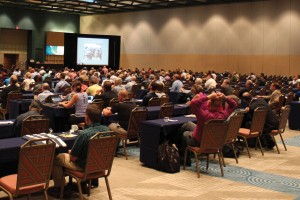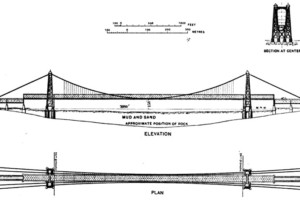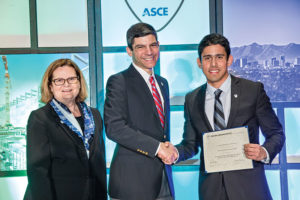It was Tuesday, September 11, 2001, fresh from the Labor Day holiday, when our innocence was shattered by attacks on the World Trade Center and the Pentagon. My colleagues and I watched in horror on TV, and on the street in front of our office on University Place in Manhattan, as the Trade Center Buildings burned and collapsed.
At the request of the New York City Department of Buildings (DOB) and the New York City Department of Design and Construction (DDC), the Structural Engineers Association of New York (SEAoNY) called for volunteer member engineers to assist in the rescue and rapid evaluation of the damaged structures at Ground Zero. The National Council of Structural Engineers Associations (NCSEA) also heeded the call for volunteers, and soon fellow engineers from all over the country joined the teams.
Deployed at ground zero as part of one of the safety assessment teams during the search and rescue, my colleagues and I saw firsthand the horror of the destruction, felt the heat of the burning buildings, and experienced the pain and frustration of the first responders.
SEAoNY performed damage assessment inspections on approximately 400 buildings around Ground Zero to determine which buildings were safe to reoccupy and which buildings required restricted access. Rapid assessments were performed on September 17 and 18 based on ATC-20 methodology successfully applied during the rapid structural assessments after the 1989 Loma Prieta and 1994 Northridge earthquakes in California. The ATC-20 methodology was adapted for the conditions found at Ground Zero. The results of the rapid assessment were reported to the DDC, the agency tasked with the work at ground zero in collaboration with the New York City Building Department.
In the midst of this tragedy, NCSEA recognized the need to form the Structural Engineering Emergency Response (SEER) committee. The purpose of this group was to prepare and plan for structural engineers to respond to any significant disaster where Civil Authorities need additional assistance in rapid structural evaluation and safety assessment.
The committee was formed in November 2001 with Gus Domel as the first Chair, appointed by the NCSEA Board. Gus authored the SEERPlan Manual together with the support of the ATC (Applied Technology Council), CASE (Council of American Structural Engineers), FEMA (Federal Emergency Management Agency), the State of California Governor’s Office of Emergency Management, as well as the Structural Engineers Associations of California (SEAOC), Washington (SEAW), and Oregon (SEAO). The manual was used as a guide for the NCSEA member organizations in the formation of their State level SEER Committees. From these groups, a Structural Engineers Volunteer roster was compiled by NCSEA.
Sandy Post Disaster Assessment
On October 29, 2012, with Hurricane Sandy bearing down on New York City, the NYC Department of Buildings collaborated with Structural Engineering practitioners in the city to have an immediate rapid assessment response post-disaster. The Department of Buildings decided that the rapid post assessment, as well as the post-disaster detailed assessment, would be performed by structural engineering firms under contract to the Department. Structural engineers willing to devote their time to this enormous effort would be subcontracted to those structural engineering firms.
The NYC DOB prepared rapid assessment forms based on ATC-20/45 and the structural engineering teams used these forms for rapid evaluation safety assessment. The teams were composed of one or two structural engineers and an inspector from the Department of Buildings.
The service performed by the structural engineers during this emergency allowed the community to bounce back quickly. The rapid inspection permitted residents to re-occupy their homes tagged with the GREEN placard, and set in motion recovery and rebuilding.
The Future
The NCSEA SEER Committee has embarked on developing a web-based database so that qualified structural engineers can be identified and mobilized to assist local authorities in the event of a widespread disaster. The 2nd Responder Roster, part of the Structural Engineers Volunteer System, summarizes an individual engineer’s qualifications, physical condition, and geographical location so that local authorities can quickly contact and mobilize rapid assessment teams within the vicinity of a disaster.
NCSEA has recently offered an on-line course for the California Office of Emergency Services (CalOES) Safety Assessment Program. This program provides basic skills required to perform a structural safety assessment based on ATC-20/45. It is a six-hour course that delivers a 7-unit program including practical tests. Upon completion, the course enables licensed design professionals and certified building officials to be certified as an SAP Evaluator. Structural Engineers can add their name to the SEER 2nd Responder Roster found on the NCSEA Volunteer System website at http://ncsea-seer.com.
It is part of our DNA as structural engineers to assist communities post-disaster. Structural engineers are the most qualified professionals to perform rapid assessments. There is much discussion now about resiliency and how communities can bounce back quickly after a disaster. The rapid assessment performed during 9/11 and Hurricane Sandy allowed New York to bounce back. Our profession can provide that skill wherever it is needed in the country and the world. The SEER Committee is here to make that a reality.




